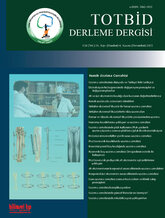
The evolution of limb lengthening surgery traces its origins back to Nicholas Andry`s `Orthopedia` in 1649, emphasizing pediatric deformity correction. In 1905, Alessandro Codivilla introduced acute limb lengthening under anesthesia, establishing himself as the `Father of Modern Limb Lengthening.` Following Codivilla, advancements by figures like Putti, Abbot, and Wagner refined techniques with a focus on gradual traction and monolateral fixators. The modern era began with Gavriil Abramovich. Ilizarov`s revolutionary circular fixator and the biological principle of distraction osteogenesis. Developed after World War II, in Soviet Russia, Ilizarov`s method emphasized controlled tension to stimulate bone and soft tissue regeneration. Despite initial obscurity due to Cold War isolation, Ilizarov`s techniques gained global recognition following his success with an olympic, record holder high jumper and subsequent collaborations with international orthopedic communities. By the 1980s, his methods became integral to global orthopedics, marked by the establishment of the foundations focusing on extremity reconstruction and limb lengthening and extensive academic contributions. In Turkey, Prof. Dr. Mehmet Çakmak from Istanbul University, pioneered the adoption of Ilizarov`s principles, founding the country`s first Ilizarov clinic with Prof. Dr. Mehmet Kocaoğlu in 1994 and forming ASAMI-TURK in 1997. His efforts laid the foundation for Turkey`s prominence in this field, culminating in hosting the 2004 3rd ASAMI-International Congress in Istanbul. Contemporary lengthening techniques have transitioned towards internal devices, such as the magnetic Precice® nail, reducing complications and enhancing outcomes. Despite technological advances, the principles established by Ilizarov remain central, underscoring the enduring importance of distraction osteogenesis in orthopedic surgery.